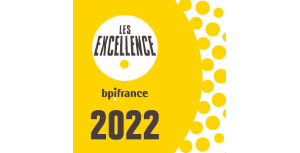Changing Consumption Habits: The Context of Alcohol-Free Wines
Faced with evolving lifestyles, health and wellness concerns, and more moderate consumption—particularly among younger generations—some wine estates have seized the opportunity to reinvent themselves by diversifying their offerings. They now offer alcohol-free wines, meeting the expectations of new audiences: pregnant women, individuals with religious restrictions, or simply curious consumers seeking innovative alternatives.
As a result, over the past few months, a surge in trademark applications has been observed in the international class dedicated to this category (Class 32), prompting trademark offices to assess the likelihood of confusion between “wines” listed in Class 33 and “alcohol-free wines” covered under Class 32 in light of this trend.
To illustrate, the position taken by the European Union Intellectual Property Office (EUIPO) on this matter is worth citing. On March 19, 2025, CHATEAU CHEVAL BLANC, a Premier Grand Cru Classé of Saint-Emilion (A) until its voluntary withdrawal from the classification in 2022, filed an opposition to assert its rights against the trademark application CHEVAL GODET No. 18 990 356, which designates in Class 32 the following goods: “Beers, mineral and carbonated waters and other non-alcoholic beverages; fruit beverages and fruit juices; syrups and other preparations for making beverages.”
CHATEAU CHEVAL BLANC based its opposition on the following goods: “Wines with the protected designation of origin 'Saint-Emilion' (PDO) originating from the estate specifically named 'Château Cheval Blanc', complying with the traditional term 'château' and the specifications of the protected designation of origin 'Saint Emilion' (PDO)” under Class 33. First, the opposition division reminded that the Nice Classification is merely administrative in nature, meaning that similarities can be established between goods/services listed in different classes, as in this case.
It is also well-established case law that, when comparing goods/services, all relevant factors must be considered, including their nature and intended purpose, distribution channels, points of sale, producers, usage, and whether they are complementary or competing. In this matter, the examiners concluded that the “wines” in Class 33 designated by the opposing mark were similar to the “other non-alcoholic beverages” contested in Class 32, which includes alcohol-free wines.
The opposition division justified this assessment by observing the growing trend among wine producers to manufacture and offer alcohol-free wine as an alternative to alcoholic wine. It held that:
“Alcohol-free wine often undergoes the same fermentation and aging processes as alcoholic wine, with the alcohol simply being removed in the final stages (by distillation or filtration). It is intended to be consumed under the same circumstances as alcoholic wine, by consumers who cannot or do not wish to consume alcohol. Being perceived as alternative products, they must also be considered as competitors. It is not uncommon for alcohol-free wine to be sold in specialty stores or in wine sections of supermarkets.”
The same conclusion was reached in the Grand Board of Appeal’s decision dated April 13, 2022 (R 964/2020-G, Zoraya / Viña zoraya): a similarity was found between “spirits” and “non-alcoholic spirits” on the grounds that, in the beverage sector, consumers are increasingly offered a choice between drinks with or without alcohol that share the same characteristics.
The similarity between specific alcoholic beverages and non-alcoholic beverages must be assessed on a case-by-case basis. Additionally, the opposition division confirmed that the “beers” listed in Class 32 by the contested application are slightly similar to the “wines” in Class 33 under the opposing mark.
Although beers and wines result from different production processes and traditionally come from different types of companies, these differences do not rule out any similarity. Beers and wines can fulfill the same need—being consumed with meals or as an aperitif. They are often purchased together, commonly found next to each other in supermarkets and grocery stores, and frequently appear in restaurant or bar menus under the same beverage category. Finally, they target the same audience: consumers legally allowed to drink alcohol.
In contrast, the contested “mineral and carbonated waters” and “wines” are dissimilar. The product nature was the prevailing criterion in this comparison. The opposition division considered the presence or absence of alcohol as a distinguishing factor for consumers.
Finally, the contested “fruit beverages and fruit juices; syrups and other preparations for making beverages” and “wines” were deemed dissimilar as they differ in nature, purpose, and use, and do not target the same audience or share the same distribution channels. Furthermore, these products are neither complementary nor competitive and are generally not produced or supplied by the same companies.
Regarding the comparison of the signs, the opposition division unsurprisingly held that the shared term CHEVAL is distinctive with respect to the designated goods, unlike the term “CHATEAU,” which is commonly used in France in the wine sector to refer to estates or vineyards. As for the term GODET in the contested mark, it did not eliminate the likelihood of confusion, as it would be understood as a “small drinking cup without a stem or handle” and therefore perceived as an indication of the tool used to consume the products concerned.
Accordingly, the opposition division found that there was a likelihood of confusion between the earlier mark CHATEAU CHEVAL BLANC and the trademark application CHEVAL GODET (under Article 8(1)(b) EUTMR) and refused registration of the sign in respect of “beers and other non-alcoholic beverages—including alcohol-free wine,” contested under Class 32.
As no appeal was lodged with the Board of Appeal by the parties, the decision has become final. This assessment remains consistent with rulings issued by both French authorities and the European Union Office regarding the comparison of products and signs.
Conclusion: Exercise Caution and Seek Legal Guidance
In conclusion, it is strongly recommended to conduct prior rights searches in classes that could be deemed identical or similar to your project before filing, and the firm's legal experts are available to provide further information to help you avoid pitfalls.
Source: EUIPO - Château Cheval Blanc vs Brasserie Ceres Belgique, March 19, 2025 – OPPOSITION No. B 3 218 170













